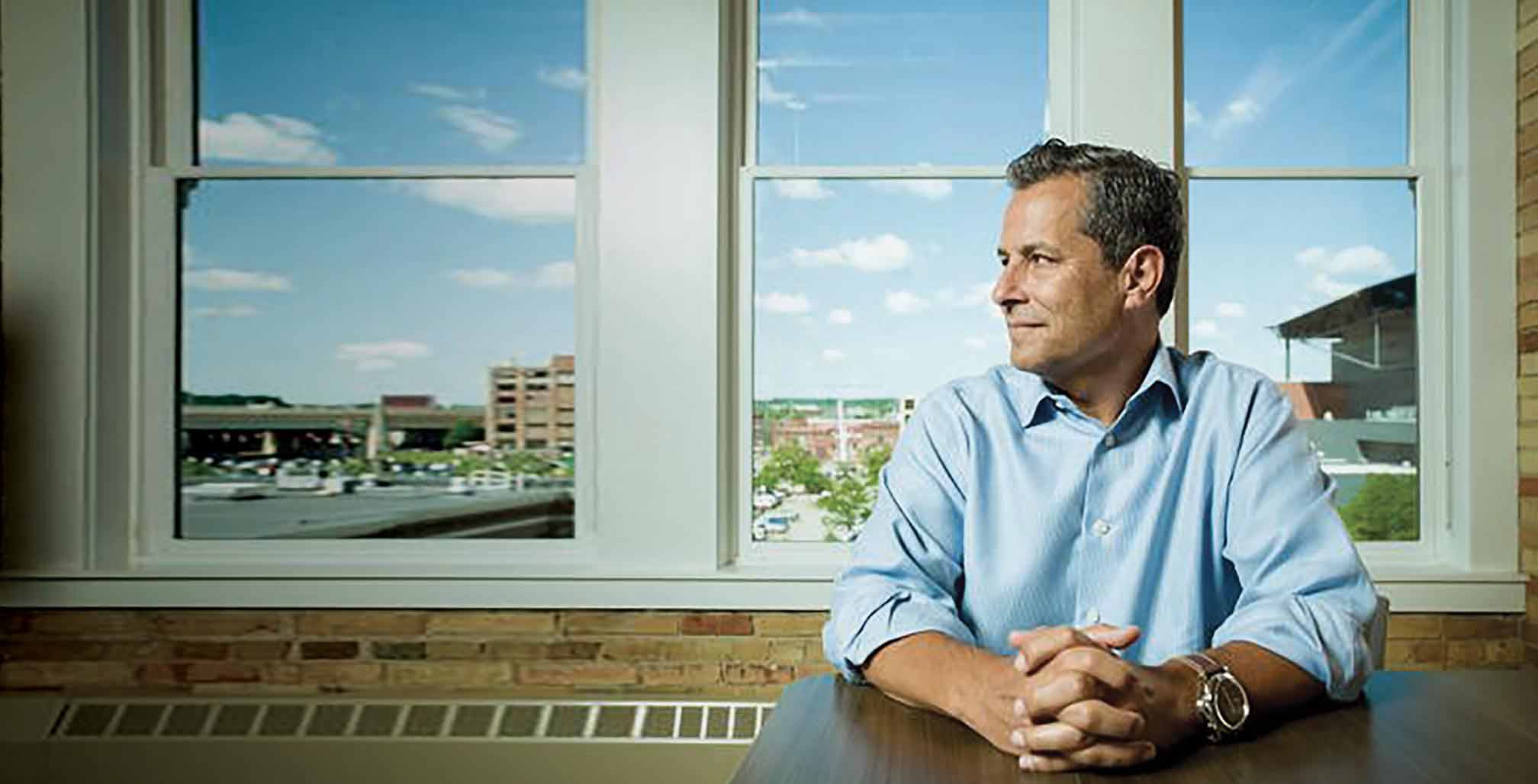When Paul Spiegelman created the job of chief culture officer at Stericycle three years ago, he was beginning a multiyear experiment. Could the corporate culture he had created and nurtured at his own company scale to fit a publicly traded company with a $12.5 billion market cap?
Mr. Spiegelman ran BerylHealth, a health care call-center company he founded, for 27 years. When he sold it in 2012 to Stericycle, a highly diversified health care services company, the more straightforward job of growing his call-center business within the larger parent did not interest him. But Stericycle’s culture was a blank slate, perfect for Mr. Spiegelman’s culture-building ambitions.
IQ interviewed Mr. Spiegelman—the author of three books about corporate culture—to find out what he has done, how he has done it and the results he has seen at Stericycle.
IQ: First off, define corporate culture.
Paul Spiegelman: My definition would be two things: It’s the vibe you feel when walking into the building, and second, it’s the extent to which employees are willing to do discretionary work above and beyond the job that they’re assigned. They’re so engaged in their work that they feel the company believes in them. They believe in the company vision such that they’re going to put their best efforts forward even if it’s not part of their job description.
IQ: Is culture more than perks—what you can wear, what hours you work, whether parking is free, that sort of thing?
PS: Yes. There’s a misconception that corporate culture is about fun or events or the cafeteria. Share on X Culture gets a bad name when it’s limited to those sorts of things. It goes much deeper, into showing that we care about the people in the business and the totality of their lives. We’re focused on employee engagement toward business success.

IQ: Why did Stericycle feel that a chief culture officer was necessary?
PS: It goes back to the fact that our culture at BerylHealth was a big part of why they bought us. Through a combination of living out our core values and a commitment to enhancing the lives of the people who worked there (through reward and recognition, and learning and development), the company became known for its culture more than the services it provided. Stericycle was interested because though it was a successful company, it hadn’t focused on the employee as a key stakeholder in the business. It wanted to change that by applying BerylHealth’s culture practices at the company.
So I suggested to Charlie Alutto, who had just recently become CEO, that I become chief culture officer. I wanted to see whether the way we did things at BerylHealth would scale. Would it work in a company that had hundreds of locations, a much bigger footprint?
IQ: What was your mandate as chief culture officer?
PS: I had no mandate. My biggest challenge was that the company was already financially very successful. They’d had something like 70 quarters of meeting or exceeding financial targets. So why change? Charlie was very honest. He said, “We have a great financial track record, but we’ve not put enough emphasis on employee engagement. I want that to be my legacy.”
Culture starts with the leader and the leader’s buy-in. Without Charlie’s support, I would have been long gone.
So this wasn’t a turnaround situation, but company leadership realized that what had worked for them to date would not continue to work indefinitely. For the first 20 years, Stericycle did one thing: It was a medical waste disposal company. Then, like so many companies, as it diversified, it resulted in an identity question. Who are we? Are we still a medical waste company?
“Culture starts with the leader and the leader’s buy-in. Without Charlie’s support, I would have been long gone.”
IQ: What did you find when you got there?
PS: I found that there was a general sense of loyalty to the company. The culture was above average in engagement, but not by much. There was so much opportunity to focus in a few different areas. One was the communication methods in a company that is so spread out. Half our employees don’t even have a company email. There was a perception that there were no internal growth opportunities, which wasn’t true—people just weren’t aware of them. There were very few of the typical tools in place that you would need to have an engaged company.
I knew it would be a multiyear strategy. I started from scratch. It was very much a blue-collar, no-frills company. There was no formal training program, no consistent reward and recognition program, no mission, vision or values statement that people could recite. Stericycle makes 30 to 40 acquisitions a year. Imagine bringing on that many new employees every year with no clear statement about who you are.
We worked with 40 global leaders to redefine the core purpose, core values and future position of the company (see “Getting to the Core”). This vision was rolled out to all team members and then institutionalized. Values are used in the hiring and firing process. People are measured on adherence to core values, and we tell stories that allow people to connect to the vision. Our reward and recognition programs are tied to the values, and we make decisions every day based on them. They are the guideposts that lead our everyday work.

IQ: How are you getting the work done to transform the culture?
PS: We have a full-time team of seven. We have 500 culture ambassadors throughout the company. Many of them are front-line workers, all volunteers. They work with the corporate culture team to implement and execute our various culture programs and give us feedback that allows us to course-correct. They work with local managers via monthly conference calls with ambassadors at each business unit to make sure the culture is being applied consistently.
All the initiatives we’ve put in place are having an impact. Now we have to work to make that consistent over the entire business. Our biggest challenge is the middle management group. We have buy-in from the top. The front line loves it because we’re doing stuff for them. The middle management reaction, however, is that some feel like culture-building is just something else for them to do. We have 1,200 middle managers in the company. We’ve spent a lot of time to help them be successful with this over time.
Building the culture helps us identify those managers who, after mentoring and coaching, don’t accept the new way of doing things. We aren’t shy about telling them it’s just not going to work. The process helps us decide whether a person is right for the job and the company. Of course, in the public company world you can’t just let people go. There are other legal considerations, for instance. I’ve tried to promote the idea that if we have employee engagement, we’re going to be sued less when we terminate someone. There is much less chance they’ll come back at you.
IQ: What is the purpose of corporate culture? Does it exist to make employees happy? To improve the customer experience?
PS: It’s both of those, but you have to consider the ROI. Every company has a culture. It can be good or bad. The question becomes whether leadership believes that investing in culture is not only the right thing to do, but is good for business. Efforts should be measured and tied directly to business metrics, like employee turnover, productivity, client retention and profitability.
When I called my [last] book Patients Come Second, I used that title to shock people a little. If we don’t fix ourselves, we can’t fix the patients. The health care industry has some of the worst corporate cultures out there. People come into the industry with a heart for service and then are treated very badly by organizations. The most dissatisfied group in the industry is nurses. Those who touch patients the most seem to be treated the worst. But if you treat people well, they will treat the customers well.
IQ: How does culture drive performance and financial results?
PS: We talk about the Circle of Growth. We have choices in how we prioritize our business, and we use many things to measure success. But we should let people be the leading indicator. We exist in part to help employees achieve their personal ambitions. Allowing them to do that will engender their loyalty, which will in turn engender customers’ loyalty. That will then drive financial results that we can invest back into our people.
“If we don’t fix ourselves, we can’t fix the patients. The health care industry has some of the worst corporate cultures out there.”
IQ: How do you measure culture? It seems a very intangible thing, difficult to quantify.
PS: Quite the opposite—it’s not intangible. It’s difficult to measure, but it can be done. If you don’t measure it, it won’t be taken seriously. When I came to this company, I had to convince many leaders there was a reason to do this, that it wasn’t just something I thought was a good idea. Board members had to be convinced that investment in engagement would bring returns to the bottom line.
We do an annual intensive survey of our employees to see if we’re moving the needle on engagement, but the results may just mean they’re happy, not necessarily engaged. So we stack that metric against a host of other things. Attrition and the cost of attrition, for instance, are big indicators. Voluntary attrition has gone down 5 percent, resulting in savings of $2 million. That’s real money. We look at customer loyalty scores. We look at profitability by location. Fifty percent of our most profitable locations have the highest level of employee engagement. This was the first time we ever measured it, which was a big step in itself.
[These results] help convince other local leaders that if they focus on people first, the money will come. Culture pays. Teaching our managers to focus on this pays off for the business. Share on XThis year we’re measuring other things. For instance, our training and development programs: Are those impacting our business measures, things like productivity and safety? One big measure is manager effectiveness. In locations where we have high levels of manager effectiveness, do they have better results?
We’ll share the results with all our stakeholders, from board members and managers to front-line employees. Everyone needs to see the results of the efforts because everyone owns the culture.
IQ: Is the job of culture ever done? Can you ever say “mission accomplished?”
PS: No. Culture is not a project. It has no end. It’s who we are, and who we are changes over time. If you believe that this is a project with an end, it won’t sustain over time. If your focus is on events, holiday parties, that sort of thing, at some point it will go away.
You have to institutionalize culture like any other process. Doing that starts with a commitment at the top and a memorializing of the mission, vision and values of the
company. Then it requires recruiting volunteers to execute on initiatives and keep it alive. Culture is like every other business process—it should be documented and shared so that it stands the test of time.
IQ: A recent Insigniam survey showed a high percentage of executives are unhappy with their corporate culture. Is it possible executives are the problem?
PS: We are all a reflection of the leader of our company. That leader has it under his or her control to make change. They need to have some self-awareness around that.
IQ: What is the most common obstacle to making change, and how can executives avoid it or surmount it?
PS: Beyond leadership buy-in and support, the biggest challenge over time is maintaining a consistent commitment. Culture-building has to become institutionalized within the business. There’s much more to be lost if you stop doing something that’s working. When I joined the company, they hadn’t done an employee survey in years. When they did, they did nothing with the data. Trust builds over time. Now we get good data because [employees] know it will be acted on.
My current challenge is, when I’m gone, how will the culture sustain itself?
IQ: What would you say to executives who say, “I get it. But how do I get started?”
PS: First, be genuine and vulnerable. It’s OK to say, “We haven’t always run the business this way, but I want to change and do it right.” There’s tremendous opportunity to win trust out of the gate.
Second, show commitment for the long term.
Third, if you find people who are passionate about the work, you will have support.






